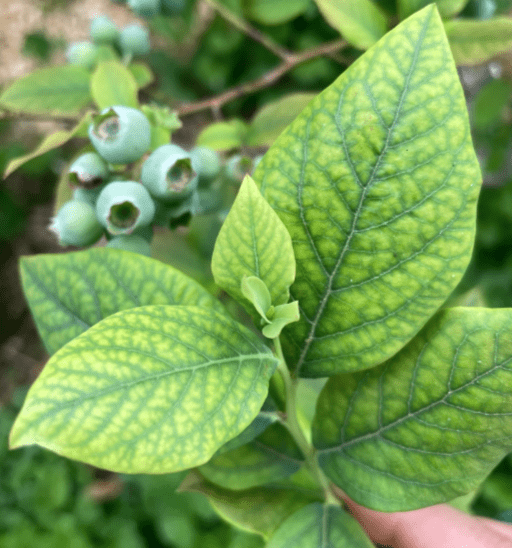About blueberries
- Blueberry plants are perennial woody shrubs with multiple stems (canes) and a shallow, fibrous root system. New shoots emerge from crown buds at the base of the plant in early spring. Plants typically produce several flushes of new top growth, especially during and right after flowering.
- Flower and leaf buds develop in late summer at the ends of young shoots and older canes. Flower buds are plump and leaf buds are slender. Each flower bud produces 5-10 flowers and fruits. Native bees, like carpenter bees and bumblebees, are more effective blueberry pollinators than honey bees. Blooms turn a wine color if not pollinated. Pollinated flowers drop after 5-6 days.
- Fruits form on canes that are 2-8 years old with 5-year-old canes being the most productive. Old canes are unproductive and should be pruned out at the crown.
- Plants can take up to 10 years to reach their mature size. Well-maintained blueberry plants can live for over 50 years.
- Learn about the growth stages of blueberries, from Michigan State University.
There are several native blueberry species that grow naturally across Maryland. Don’t take cuttings from or dig up these wild plants. Three basic types are grown by gardeners and commercial growers:
- Northern highbush (Vaccinium corymbosum) – the most widely-grown and the most cold-hardy; 3–6 feet tall
- Southern highbush hybrids (Vaccinium corymbosum X Southern species) – can tolerate a wide range of soils; more heat- and drought-tolerant and breaks dormancy earlier than Northern highbush; should grow well in all regions except far Western MD; 6-7 feet tall
- Rabbiteye (Vaccinium ashei) – a Southern species that can be grown in Southern MD and the Eastern Shore; 6-12 feet tall
- There are many compact cultivars for container blueberry growing, including Peach Sorbet, Tophat, a high-bush/low-bush cross that grows to 2-3 ft. in height, and several, and several half-high cultivars, like Northsky, that reaches 4 ft. in height.
Recommended blueberry cultivars
It is recommended to select a combination of cultivars that can provide a continuous harvest from July through mid-September. Blueberries are self-fertile but produce more and larger berries when two or more cultivars are planted. Be sure bloom times overlap. Purchase 2- to 3-year-old plants.
| Recommended Blueberry Cultivars | ||
|---|---|---|
| Cultivar | Type | Comments |
| Blue Ribbon | Northern highbush | Ripens early to mid-season. High-yielding with long storage life. |
| Bluecrop | Northern highbush | A standard for Maryland. Firm, crack-resistant fruit. |
| Blueray | Northern highbush | Large fruit; heat-tolerant plant. |
| Duke | Northern highbush | Early ripening, light-blue berries. |
| Lenoir | Northern highbush | Firm and flavorful. Ripens mid- to late-season. |
| Reka | Northern highbush | Developed in New Zealand. Drought-tolerant. |
| Top Shelf | Northern highbush | Very large and very flavorful fruit. Stores well. |
| Legacy | Southern highbush | Evergreen foliage during mild winters. Ripens late mid-season. |
| O’Neal | Southern highbush | Ripens mid- to late-season. Good pollenizer for other blueberries. |
| Ozarkblue | Southern highbush | Large, light-blue fruit. Heat-tolerant. |
| Brightwell | Rabbiteye | Big yields of deep-blue fruit. Heat- and drought-tolerant. |
| Premier | Rabbiteye | Compact but prolific plant. High yields of dark berries. |
Note: Duke, Reka, and Premier are considered early season for fruiting. All others are mid-season.

